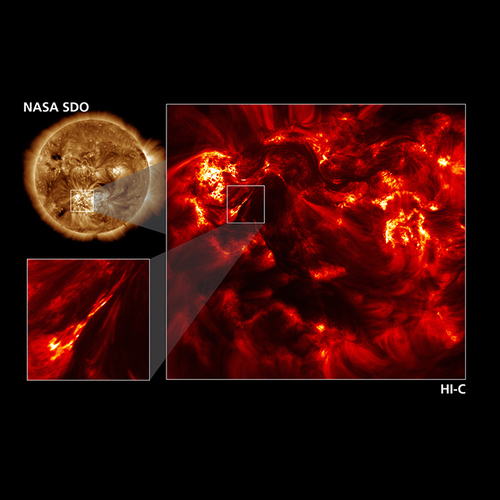
The University of Central Lancashire (UCLan) in collaboration with NASA, the Harvard-Smithsonian Center for Astrophysics and other partners* have captured the highest resolution images ever achieved of the Sun’s outer atmosphere (corona), the results of which are outlined this week in the journal Nature.
NASA’s High Resolution Coronal Imager, or Hi-C, was launched to the edge of space on July 11 2012, from White Sands Missile Range in New Mexico, USA. The resulting images provide intriguing hints of a mechanism that likely contributes significantly to the heating of the solar corona.
For several decades scientists have sought to understand why the outer parts of the solar atmosphere are on average about two million degrees Kelvin, about 400 times hotter than the surface of the Sun.
For the first time, Hi-C’s image sequences show the twisting up or braiding of the magnetic field that is threaded through the corona. This distinctive braiding of the magnetic field is a clear signal that energy is being added into the corona which may then be released violently, heating the electrified gases to well over 2 million degrees.
Further details can be found on the University’s press release
